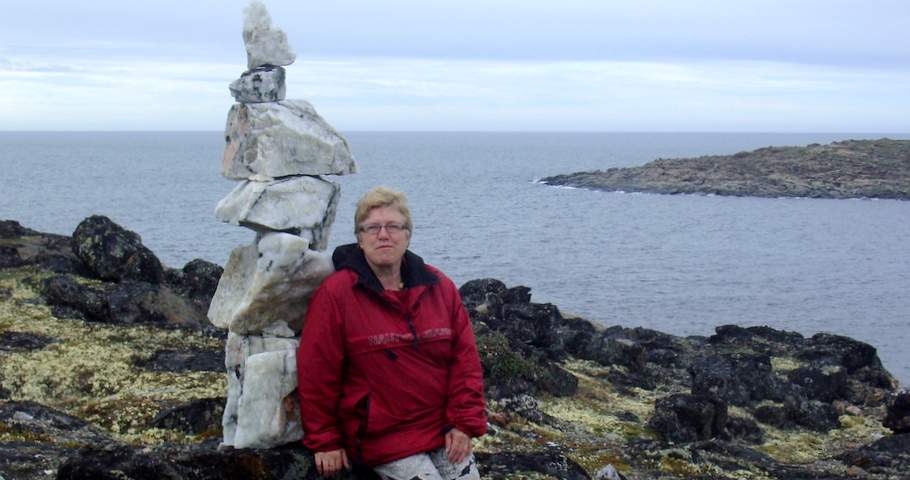A few months ago, I heard a First Nations woman say how happy she was that she had had a child, a beautiful healthy girl. But her next sentence literally froze me to the bone. She said: “I started fearing for my girl because she was a girl”.
Increased awareness regarding the safety and support of women and children
Although there is increased awareness regarding the safety and support of
women and children affected by domestic violence, resource constraints create a challenging context for the delivery of effective services and real
justice to
women and children. In a previous work experience, the department assuring support to the community had one full-time person and one occasional additional person for just so many months a year. The community workers were there to translate and negotiate which made for an inordinate amount of work distributed amongst the agents. It was impossible to ever get it all done.
Risk factors that contribute to domestic violence
Over and above that, tackling the risk factors that contribute to domestic violence requires that they be recognized and dealt with in the first place. The
various factors include inadequate living conditions,
poverty, poor housing, unstable and stressing situations due to overcrowding. To that, you add family factors that include
family poverty and parental substance abuse. If you add to that, lack of employment opportunities, there is a cocktail that can create a
context of violence. Children are particularly affected by
poverty-related issues.
Roles have been reversed
Although many
social issues are gender related in our modern Canadian society,
some issues are unique to the indigenous populations, notably those that affect the Inuit and Indigenous people. Rapid social changes brought about by colonization have affected women and men differently. Mindful of the gender model, especially when looking at Inuit society, roles which defined various activities have somewhat been reversed.
Because
women are generally more able to maintain their traditional activities of caring for the children and the household, it might be construed that they experience less stress while the Inuit men experience large gap in employment possibilities due to addiction or they because have been involved in the criminal justice system and find themselves unemployable.
Parents play the most important role in the development of their children
The role of the parent is demanding. It requires skill, flexibility and openness to learning. Alone or as a couple, in one or two houses, all parents need the support of family, friends and their community to raise their children.
Heightened rates of depression
The Inuit mothers meet challenges and difficulties associated with their circumstances: inadequate living conditions as in overcrowding fuels other social conditions. The
domestic violence, the substantial alcohol abuse, the lack of employment opportunities and training for the men all contribute to heightened rates of depression, trauma symptoms and self-harm of mothers and children.
Suicide rates remain high. The
suicide rate in some communitis is 25 times higher than the Quebec average,
Lack of adequate housing increases risk factors
It is always useful to look
behind the scene when one tries to assess situations. In the context of mothers having to work outside the home, it can be observed that they face many risks factors. They have to depend on family members to babysit when they are at work. Inuit families are generally composed of grandparents, aunts, uncles, and children living together. Sometimes, non-relatives are included in the group due to the severe lack of housing facilities.
Lately, many commentators have started to identify the justice system's
failure to recognize trauma experienced by the battered women and the resulting psychological, social and economic constraints that keep these same battered women from taking
steps to protect their children from abuse. The women work from a conviction of helplessness that keeps them unable to take steps to protect their children against abuse.
One common misinterpretation is that a battered woman who remains in the home with a man who is also abusing her children can do something about it. People's opinion tends to change to indignation toward the mother who fails to intervene on her children's behalf. It is not that simple.
The engendered stress leads to more distress
In other articles, I have already mentioned that the isolation, the lack of financial resources, the racism met in the South were deterrents for the mothers to leave the family home following domestic violence. The isolation, the lack of financial resources, the racism met in the South are often deterrents for the women to leaving the family home following domestic violence. Besides that, leaving not only holds a high financial cost, it holds an even higher emotional cost. Because there are few alternative homes to welcome a woman and her
children in a small community, the engendered stress of facing homelessness leads to more violence and distress.
Serious harm can come to the children as a result of their mothers' inaction
In certain respects battered
mothers have been wronged by the system; however, serious harm can come to the
children as a result of their mothers' inaction. We are advocating the recognition of battered women's psychological and social powerlessness. But, when deciding what is in the best interest of the child, serious consideration must be given to the condition of both the mothers and the children. More and better services must be offered to the women so that they do not have to relinquish their parental rights. The children should have a
safe place to go to when it is chaos in their home.
The prolongation or worsening of the tensions between adults can cause stress
No child develops without experiencing difficulties and tensions arising from relationships with family and peers. However, the prolongation or worsening of these problems can cause stress, anxiety or depressive state in many children. In a family where there are bursts of violence, the
violence frequently escalates, the children often being at the heart of these altercations.
No Child Should Have to Take the Long Way Home
This is the reason for th project
No Child Should Have to Take the Long Way Home. I have always been sensitive to injustice. In fact I saw clearly when adults and children were
burdened by trauma and oppression. I have had a good education and as soon as I graduated from university I learned quickly from the children I taught in high school that everyone was not dealt equal opportunities. I think, with that same fundamental sense of fairness that I, myself, cherish that fairness implies respect and all children need to grow up in a culture of respect if they are going to thrive.
Some situations only contributed more to the mother’s evolving powerlessness
Threats to remove children from the home fail to create a favourable climate to ensure the safety of women and children. In our judicial system, women who are victims of abuse face numerous consequences when they fail, as a result of their own abuse, to protect their children. As I remember it, when a situation arose where we suspected that a child was in danger, we were told to put pressure on the family. The situation was, more often than not, one, involving violence towards the mother or towards the children. This situation only contributed more to the mother’s evolving powerlessness. In her family environment she lost all control, and later, at court, this place of power decided on the fate of her child.
It would help to promote culturally sensitive Inuit knowledge on how to raise children
To decrease the number of foster care placement, to promote family harmony, strength and unity, and to restore parental skills among Inuit men and women, it would be helpful to promote culturally sensitive Inuit knowledge on how to raise children as community-supportive services are being set up. Advocacy centres might be necessary in every Nunavik communities. The understanding and advocacy of battered women and the protection of abused children to end the cycle of abuse begins with representation. Seemingly, these should not be viewed as two competing interests.
The provision of a "home away from home" for children
Battered women often fail to seek help from authorities because that will make their precarious home situation even worse for both themselves and their children. Therefore, the provision of a "home away from home/respite home" for children and a temporary unit for battered women probably would help
build more effective relationships and ongoing support to women victims of domestic violence so that they can be rehabilitated in their parental roles.
All changes must be rooted in the communities
The values of the Inuit should be restored to contribute to the well-being of Inuit communities. I completely agree with Saturviit that all changes must be rooted in the communities and supported by services designed and delivered in Nunavik. More than ever, parents and leaders at local and regional levels are necessary to become real-life models for young people and instill pride in being Inuit or Indigenous.








No comments:
Post a Comment